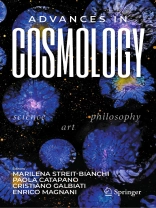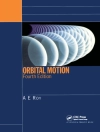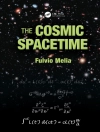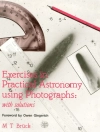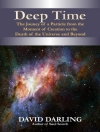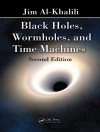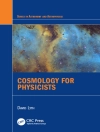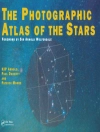Cosmology’s journey to the present day has been a long one. This book outlines the latest research on modern cosmology and related topics from world-class experts. Through it, readers will learn how multi-disciplinary approaches and technologies are used to search the unknown and how we arrived at the knowledge used and assumptions made by cosmologists today. The book is organized into four parts, each exploring a theme that has troubled humankind for centuries. Since the dawn of time, looking at the sky, humans have tried to understand their origin, the laws governing it, and what influence it all has on human life. In most ancient civilizations, astronomers embodied the power of knowledge. This knowledge was not compartmentalized, and scientists often found philosophical implications within their quests, many of which destroyed the borders between the natural sciences. Even now, as observers and scientists continue to use conjecture to generate theoretical assumptions and laws that then have to be confirmed experimentally, said theoretical and experimental searches are being linked to philosophical thinking and artistic representation, as they were up until the 18th century. This multi-disciplinary book will appeal to anyone with an interest in the fields of Astronomy, Cosmology or Physics.
Содержание
Part 1: From Astronomy to Modern Cosmology.- Chapter 1 - Looking at the sky: from Galileo to Newton to Einstein (Ugo Moschella).- Chapter 2 — Cosmological thinking from myths to science (cosmology in emerging quantum mechanics) (Gabriele Veneziano).- Chapter 3 — Modern cosmological theories (Kai Schmitz).- Part 2: Search of dark matter, dark energy, Black Holes, star formation and other cosmological searches.- Chapter 4 — Introduction on CERN search of Dark Matter and other searches relevant for astrophysics (Suchita Kulkarni).- Chapter 5 — Searching for Dark matter with the ATLAS detector (Caterina Doglioni and Dan Tovey).- Chapter 6 — Searching for Dark matter with the CMS detector (Deborah Pinna).- Chapter 7 — Probing Stealth Dark Sectors with LHCb (Carlos Vázquez and José Zurita).- Chapter 8 — Hunting Dark Matter Axions with CAST (Marios Maroudas and Kaan Ozbozduman).- Chapter 9 — FASER: the lifetime frontier at the LHC and the search for dark matter (Michaela Queitsch-Maitland).- Chapter 10 – BASE Testing Fundamental Symmetrics with High Precision Comparisons of the Properties of Antiprotons and Protons (Stefan Ulmer).- Chapter 11 – NA64 Search for Dark Sector Particles (Dipanwita Banerjee).- Part 3: Space searches.- Chapter 12 – The AMS experiment on the International Space Station (Maura Graziani and Nicola Tomassetti).- Chapter 13 – The right key-Four spacewalks to repair the Alpha Magnetic Spectrometer on the International Space Station (Claudio Bortolin and Paola Catapano).- Part 4: Gravitational waves.- Chapter 14 – Gravitational Waves: Why and How (Federico Ferrini).- Part 5: Underground Discovery of Dark Matter.- Chapter 15 – Under the Gran Sasso (Cristiano Galbiati and Walter Bonivento).- Part 6: Optical Astronomy.- Chapter 16 – Big telescopes and observatories: hi-tech challenges for great astronomical science (Gianni Marconi and Riccardo Scarpa).- Chapter 17 – Other worlds in the cosmos: from philosophy to scientific reality (Michel Mayor, Emeline Bolmont, Vincent Bourrier, David Ehrenreich and Christoph Mordasini).- Part 7: Philosophy.- Chapter 18 – Space, time and matter in the primordial Universe (Francesca Vidotto).- Part 8: Art.- Chapter 19 – The shore between Art and Science (Enrico Magnani).
Об авторе
Marilena Streit-Bianchi received a doctorate in Biological Sciences from the University of Rome and joined CERN, the European Organization for Nuclear Research in Geneva (Switzerland), in 1969. She has been a pioneer in the study of high-energy particles produced by accelerators for cancer treatment. She has held managerial positions on safety training and technology transfer, has been a senior honorary staff member at CERN, and is actively engaged in art and science as a book editor and curator of exhibitions in Europe and Mozambique. She is the vice president of the international association ARSCIENCIA and a member of the Italian Physics Society (SIF). She has been one of the editors of the book “Mare Plasticum-The Plastic Sea -Combatting Plastic Pollution Through Science and Art”, published by Springer.
Paola Catapano is a science journalist and science communicator. In 1987 she graduated in simultaneous interpreting from the University of Trieste and in 1997 she obtained a master’s degree in Science Journalism from SISSA (International School for Advanced Studies), Trieste. At CERN since 1990, she is currently head of the editorial content production in CERN’s Education, Communication and Outreach group. In 2010-11, she authored and hosted the TV program DIXIT Science for the Italian National Television, RAI. She has created and led the research expedition to the Arctic Polarquest2018, whose program included historical exploration, measurements of cosmic rays, drone mapping of uncharted territories, and plastic debris sampling until the 82°nd parallel (conferences and book “Mare Plasticum-The Plastic Sea -Combatting Plastic Pollution Through Science and Art”). She has participated in several Science Festivals, and won international awards.
Cristiano Galbiati is a particle physicist that received his Ph.D. from the University of Milan. He is a full professor at the Physics Department of Princeton University (Princeton, New Jersey) and professor of Particle Astrophysics at the Gran Sasso Science Institute (GSSI L’Aquila, Italy). His research has been on solar neutrinos and he is now the coordinator of the experiment Dark Side at the INFN National Laboratories of Gran Sasso, and of the project Aria at Monte Sinni in Carbosulcis (Gonnesa, Sardegna) searching for dark matter. In addition to his many scientific publications, he is the author of the book ‘Entità obscure. Viaggio ai limiti dell’Universo’, published by Feltrinelli in 2018.
Enrico Magnani is an international artist who integrates into his works, art, science, and transcendence. He graduated as a nuclear engineer at the Polytechnic University of Milan in 2004 and worked as a scientist at Karlsruhe Institute of Technology (KIT) for the nuclear fusion projects ITER and DEMO (2006-2010). At a certain point in his scientific career, he decided to dedicate himself entirely to art. His work has been presented in museums, foundations, private galleries, and public institutions in Europe and the United States. In 2017 he started a series of artworks titled “Supernova”, while in 2019 the exhibition at CERN “Searching the Unknown — The Dark Matter Collection”. In 2020 he realized a permanent installation “Quintessence” at the INFN Gran Sasso National Laboratory.
